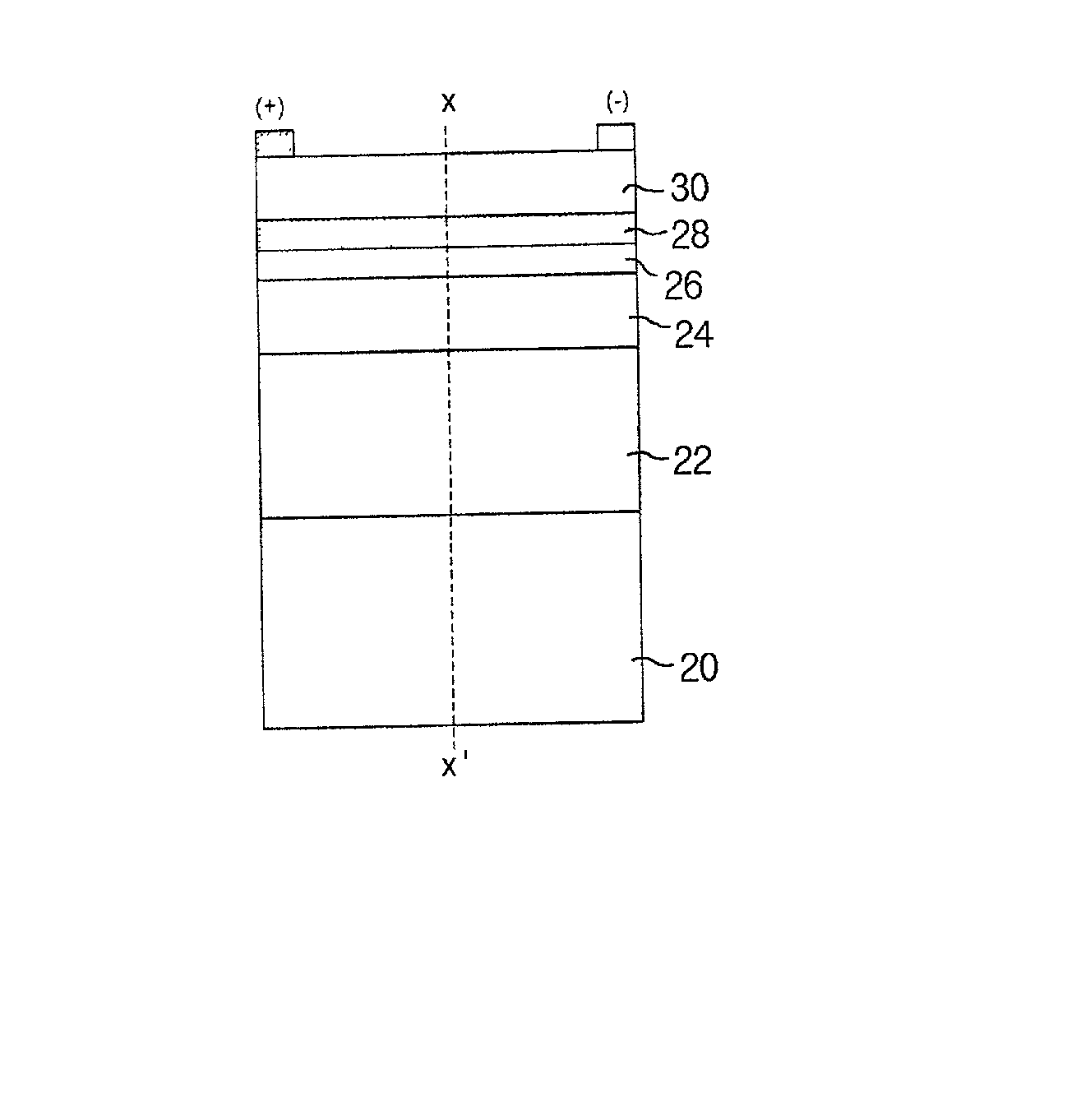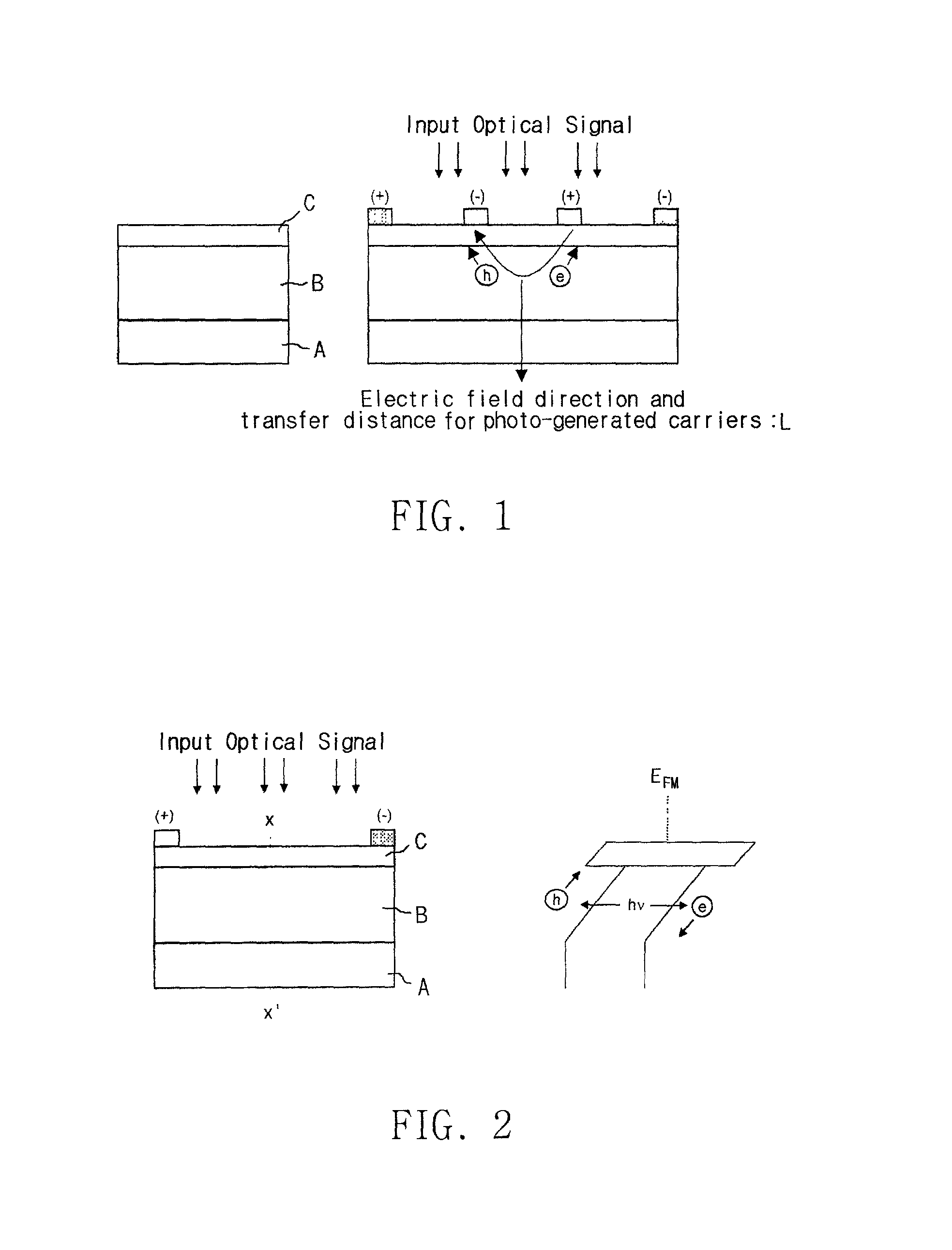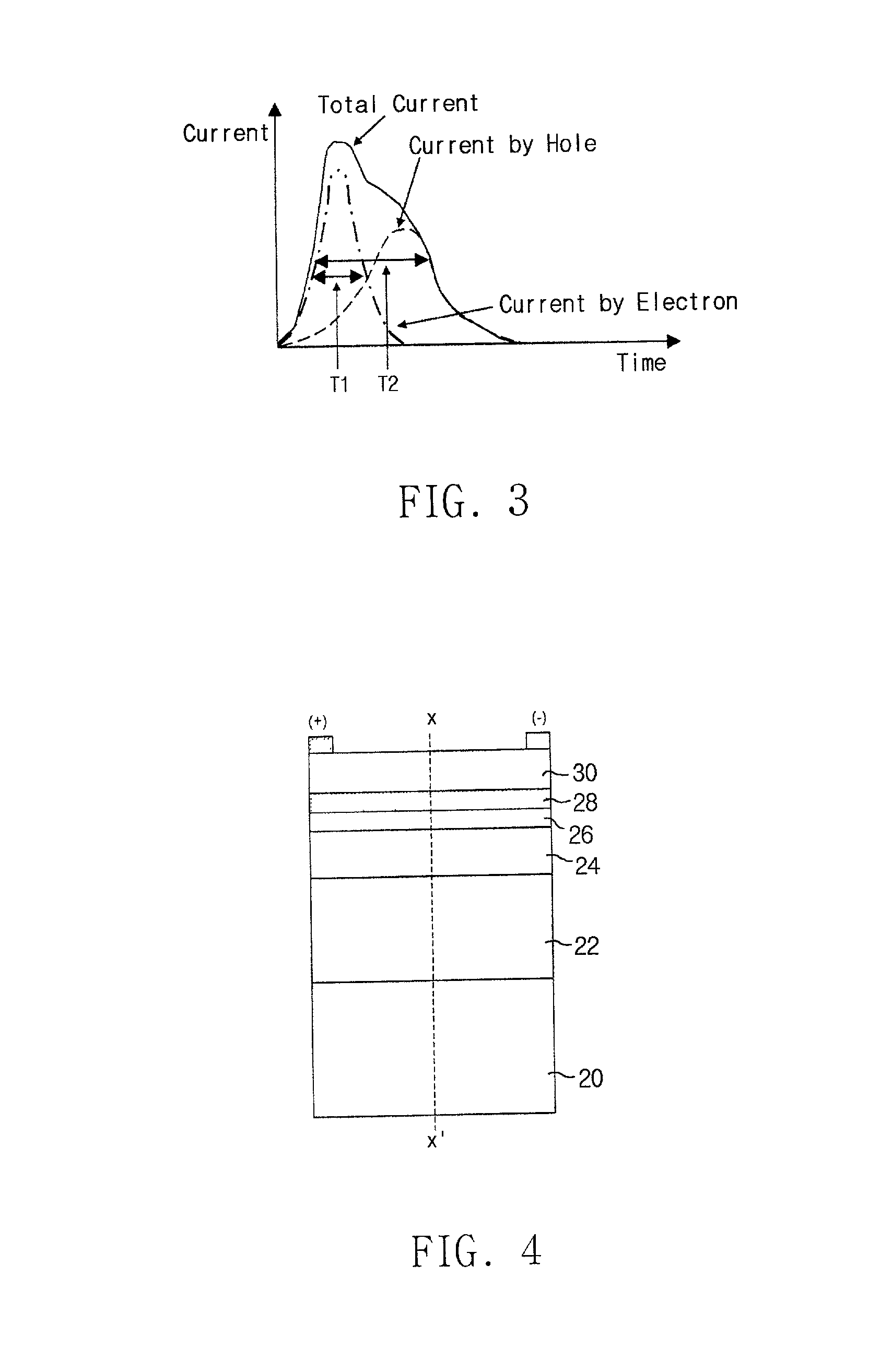Photodetector utilizing a HEMTstructure
a photodetector and hemt structure technology, applied in the direction of basic electric elements, electrical apparatus, semiconductor devices, etc., can solve the problems of difficult modification of hole mobility, limiting the current impulse response of the hole, and limiting the speed performance of the msm photodetector
- Summary
- Abstract
- Description
- Claims
- Application Information
AI Technical Summary
Problems solved by technology
Method used
Image
Examples
first embodiment
[0038] The following describes the epitaxial layer structure of the MSM photodetector according to the present invention with reference to FIG. 4.
[0039] The buffer layer 20 is an undoped epitaxial layer grown on the semi-insulating substrate in order to improve the quality of the epitaxial layer.
[0040] The channel layer 22, grown on the buffer layer 20, is a p-doped epitaxial layer used as an absorption layer of the MSM photodetector, in which electron hole pairs are generated by absorbing the optical signal and transported by electric field.
[0041] The thickness and doping concentration of the p-doped layer 22 have to be optimized so that the layer can be completely depleted at the operating bias voltage of the MSM photodetector. When the p-doped epitaxial layer 22 is fully depleted, it generates an electric field that moves the photo-generated electrons toward the metal electrodes and the photo-generated holes away from the metal electrodes as shown in FIG. 6.
[0042] The other chann...
second embodiment
[0055] So far MSM photodetector structures based upon the delta-doped HEMT structure are described. The following describes MSM photodetector structures based upon the uniform-doped HEMT structure according to the present invention with reference to FIG. 8.
[0056] The first one is a GaAs-based photodetector structure. The structure comprises; an undoped Al.sub.xGa.sub.1-xAs (0.ltoreq..times..ltoreq.0.4) buffer layer 20 grown on a semi-insulating GaAs substrate, a p-type ln.sub.xGa.sub.1-xAs (0.ltoreq..times..ltoreq.0.-25) channel layer 22 grown on the Al.sub.xGa.sub.1-xAs (0.ltoreq..times..ltoreq.0.4) buffer layer 20, an undoped ln.sub.xGa.sub.1-xAs (0.ltoreq..times..ltoreq.0.25) channel layer 24 grown on the p-type ln.sub.xGa.sub.1-xAs (0.ltoreq..times..ltoreq.0.25) channel layer 22, an undoped barrier layer 26 which is formed by either Al.sub.xGa.sub.1-xAs (0.ltoreq..times..ltoreq.0.4) or ln.sub.xGa.sub.1-xP (0.45.ltoreq..times..ltoreq.0.55) grown on the ln.sub.xGa.sub.1-xAs (0.lto...
PUM
 Login to View More
Login to View More Abstract
Description
Claims
Application Information
 Login to View More
Login to View More - R&D
- Intellectual Property
- Life Sciences
- Materials
- Tech Scout
- Unparalleled Data Quality
- Higher Quality Content
- 60% Fewer Hallucinations
Browse by: Latest US Patents, China's latest patents, Technical Efficacy Thesaurus, Application Domain, Technology Topic, Popular Technical Reports.
© 2025 PatSnap. All rights reserved.Legal|Privacy policy|Modern Slavery Act Transparency Statement|Sitemap|About US| Contact US: help@patsnap.com



